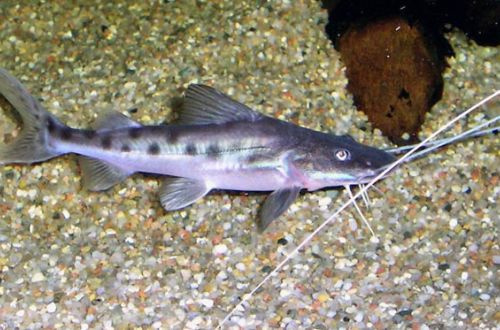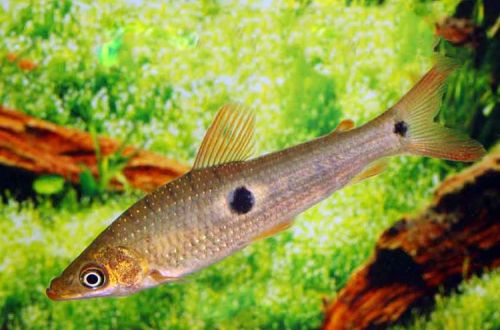
Plecostomus spotted
Spotted Hypostomus or Spotted Plecostomus, scientific name Hypostomus punctatus, belongs to the Loricariidae family (Chain Catfish). The fish is native to South America. Inhabits river systems in the southeastern states of Brazil. It is found everywhere both in fast-flowing rivers and in calm swampy reservoirs.

Description
Adult individuals reach a length of up to 30 cm. Catfish has a flattened body with a large rounded head (when viewed from above). The body is covered with hard bony plates studded with tiny spines and several rows of larger spines. The fins are large and fan-shaped. The first rays are noticeably thickened, changing into sharp spikes.
There are several geographical forms that differ in body color. The most common are individuals with a light brown tint with a pattern of dark spots.
Behavior and Compatibility
Young catfish are peaceful and often gather in groups. However, as they grow older, they become territorial and do not welcome nearby their relatives and other bottom fish.
In a small aquarium, there should be only one Hypostomus spotfin, for example, in the company of several species of comparable size that live in the water column or near the surface. In large tanks, two or more adult catfish are allowed.
Brief information:
- The volume of the aquarium – from 350 liters.
- Temperature – 22-28°C
- Value pH — 5.0–8.0
- Water hardness – up to 25 dGH
- Substrate type – any
- Lighting – subdued
- Brackish water – no
- Water movement – any
- The size of the fish is up to 30 cm.
- Nutrition – any plant-based sinking food
- Temperament – quarrelsome
- Single content
Maintenance and care, arrangement of the aquarium
The optimal size of the aquarium for one catfish starts from 350-400 liters. In the design, it is necessary to provide places for shelters corresponding to the size of the fish, for example, from large natural snags or thickets of strong plants.
Spotted plecostomus is safe for aquarium plants, but it is worth remembering that it can easily uproot young shoots with a weak root system.
Since in nature the catfish inhabits various environments, therefore it is not picky about the conditions of detention. Able to live in a wide range of hydrochemical parameters, which simplifies water treatment during aquarium maintenance.
Food
It feeds on everything that reaches the bottom, but prefers plant foods. The basis of the diet can be flakes, granules, tablets based on algae; lettuce, peas, frozen spinach, cucumber pieces, zucchini, etc. As a supplement, you should use ordinary sinking foods, as well as live or frozen foods such as bloodworms, shrimp pieces.





